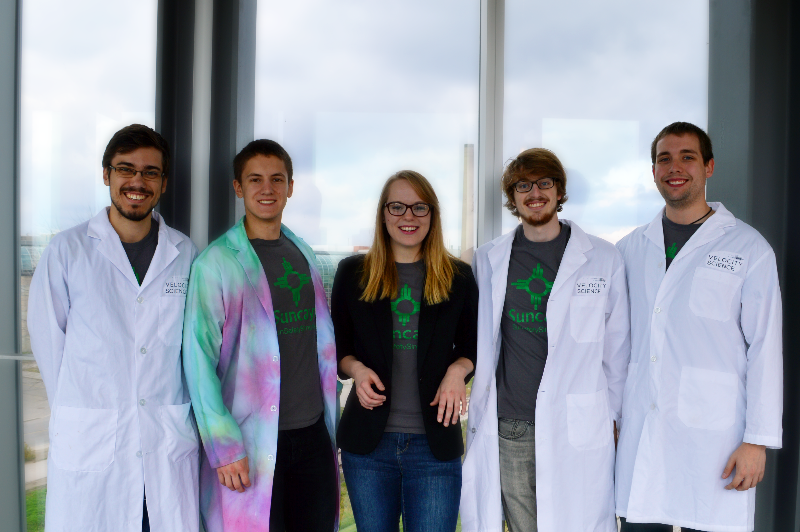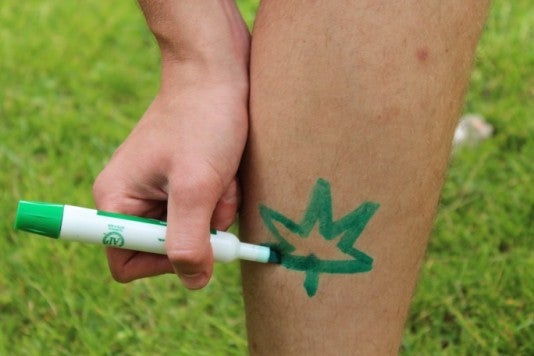A Waterloo nanotechnology engineering student startup that is developing a marker to indicate when you need to reapply sunscreen is the first Canadian company to be honoured in the finals of an international design competition.
Suncayr, a company launched by Rachel Pautler, Derek Jouppi, Andrew

Suncayr users simply draw a design on their skin before applying sunscreen. When the sunscreen is protecting skin, the marker is one colour. When the sunscreen is no longer blocking harmful UV rays, the marker changes to a different colour notifying the user it’s time to reapply.
As a runner-up of the James Dyson award, the group, now part of Velocity Science, will receive $9,000 (£5,000) to further develop, test and ultimately commercialize their project.
Inspired to develop a better product
“Our team was inspired to develop a product that would better protect

“The consequences of not having adequate sun protection are significant. Suncayr uses visual cues, so it’s obvious when it’s time to reapply sunscreen,” said James Dyson when announcing the startup's award. “As with all the best problem-solving designs, it’s very simple to use – but very effective.”
Crediting their engineering education
Jouppi, Suncayr's co-founder and engineer, credits the team's nanotechnology engineering education to developing a solution to solve a problem.
"We spent the first few years of our degree learning the science behind the full spectrum of engineering – computer programming, electronics, classical mechanics, chemistry, and materials science," he said. "Before we knew it, we were already in our 3B term, and with such a diverse background, we had a massive range of areas in which we could apply nanotechnology to replace a classical solution or to solve a problem."
Jouppi emphasized that connecting in third year with Nasser Abukhdeir, a Waterloo chemical engineering professor, made a major difference in the development Suncayr.
"He saw our passion for entrepreneurship, and swiftly put us on the right track researching the core technology behind Suncayr," Jouppi said.
"Since then, we've made countless connections around campus, and have met with many professors who have helped us take the concepts we've been introduced to in our courses and really dive into them. This has allowed our engineering minds to go straight to work."
Waterloo teams only ones to make Dyson finals
Last month Suncayr along with EyeCheck, developed by Waterloo systems design engineering students, were selected as the only Canadian inventions to make the final round of the competition that began with over 600 entries from 18 countries.
EyeCheck, an affordable way of diagnosing eye problems, was developed as a systems design engineering Capstone Design project by Ashutosh Syal and Daxal Desai after their professor John Zelek challenged his class to come up with a mobile phone-based solution to assess near-sightedness in third-world countries.
The low-cost alternative for performing eye exams in areas currently underserved by vision services uses a smartphone app, standalone camera and server-side image processing to solve the problem of providing prescriptions for millions of people in developing countries.
Both companies received financial support through Waterloo Engineering's Engineer of the Future Trust and Entreprise Co-op, run out of the Conrad Centre. They are continuing to develop their products: EyeCheck through the Velocity Foundry launched this past summer and Suncayr through Velocity Science.